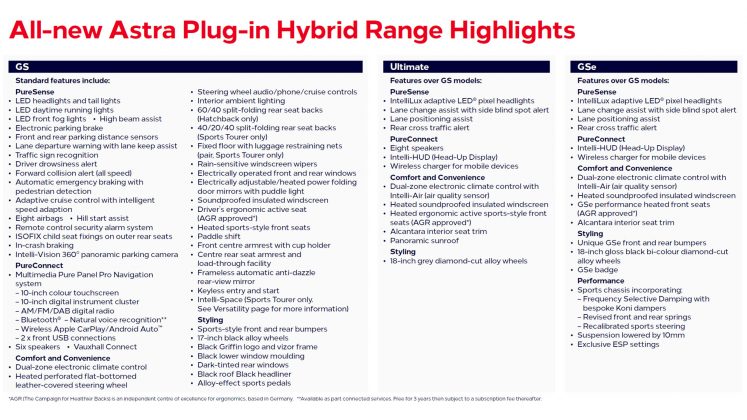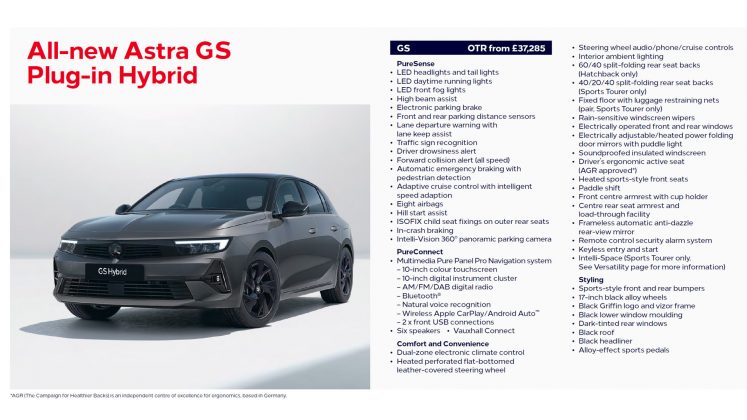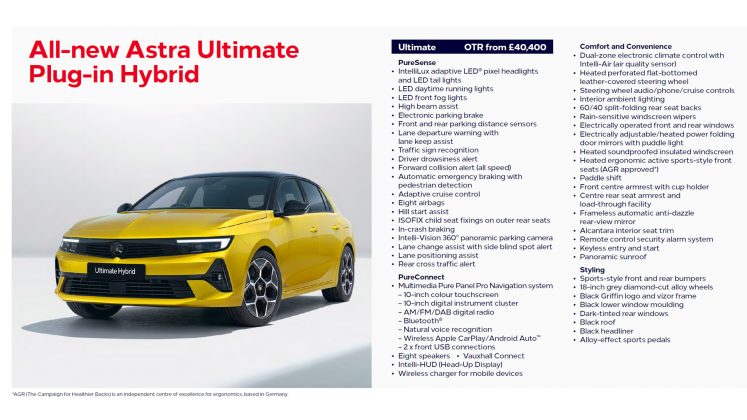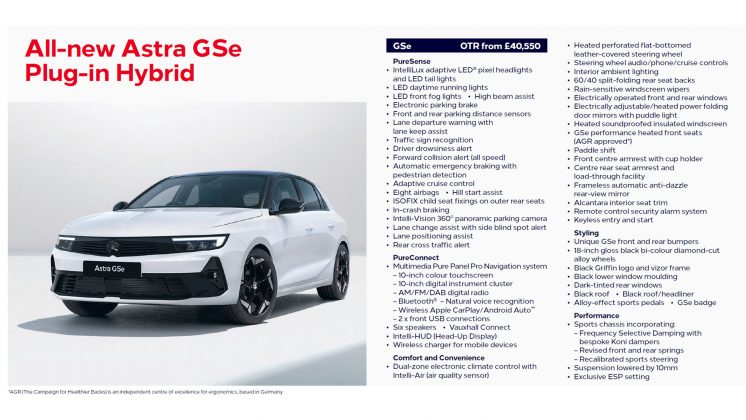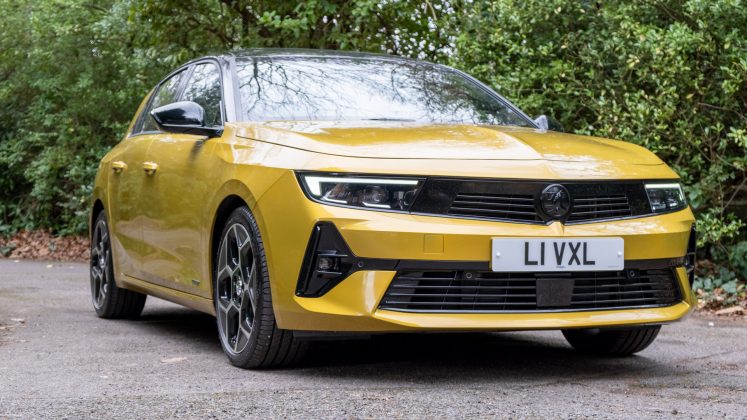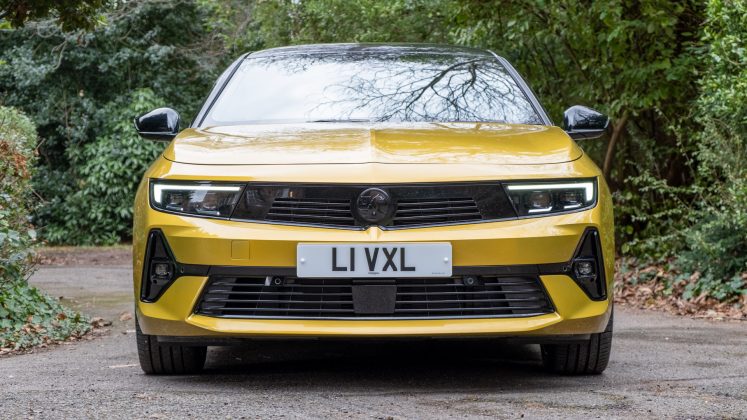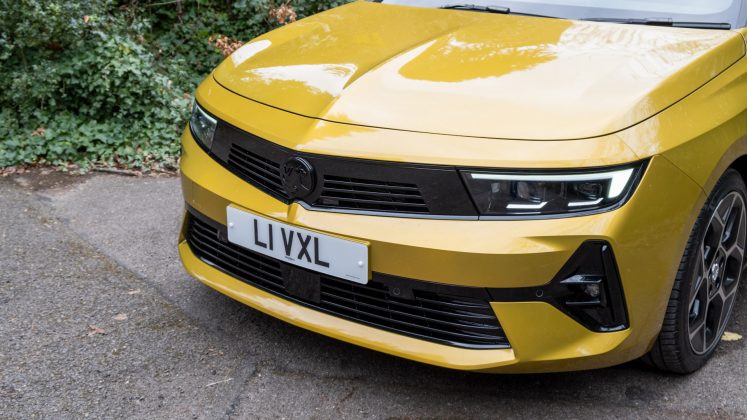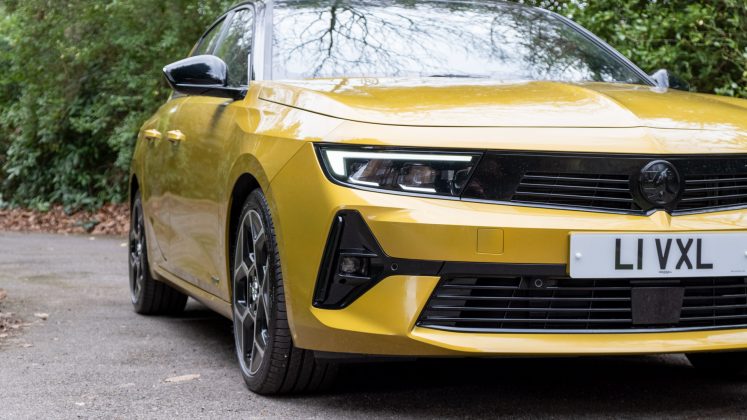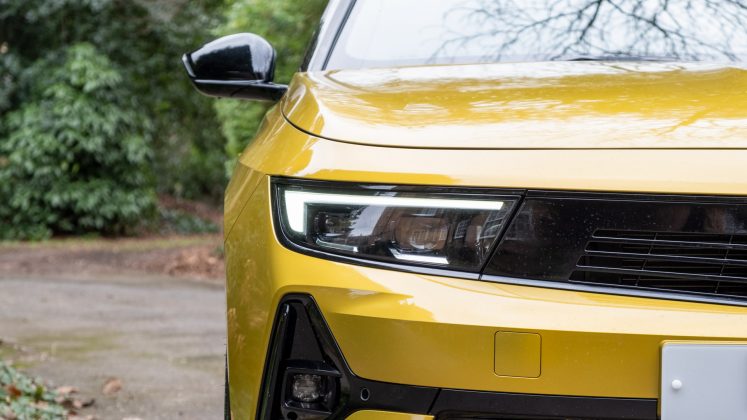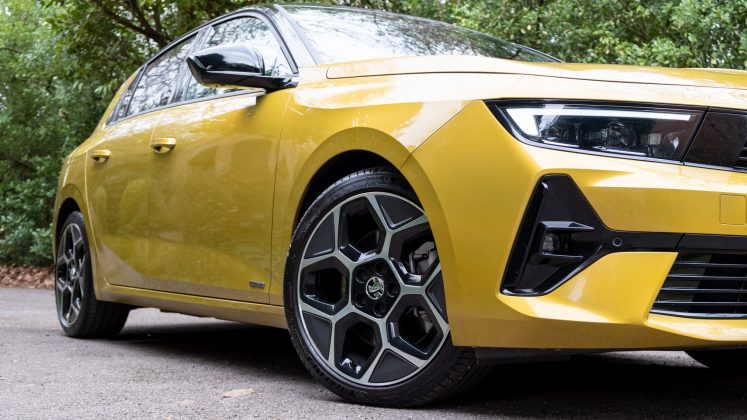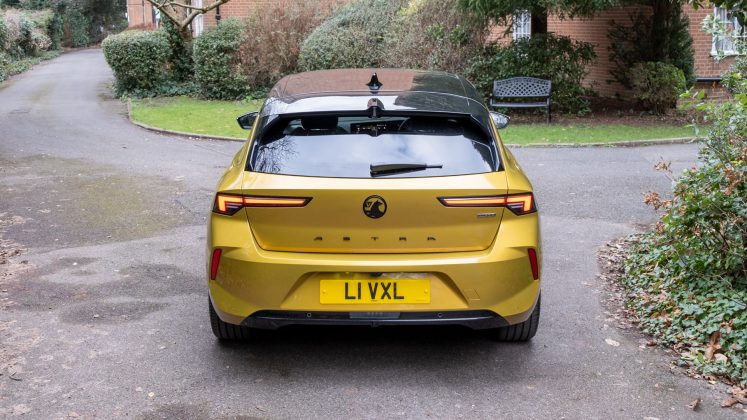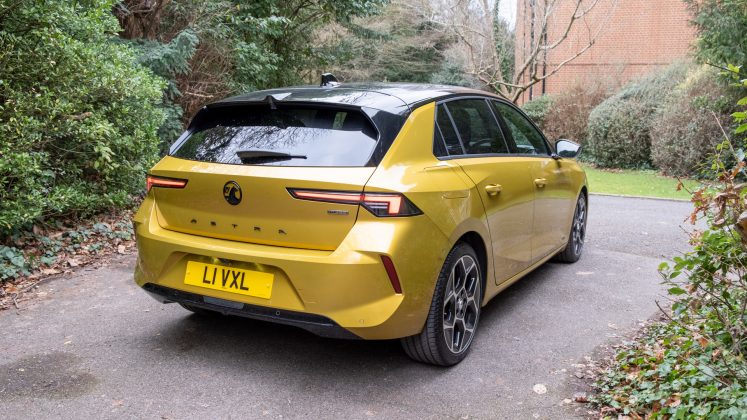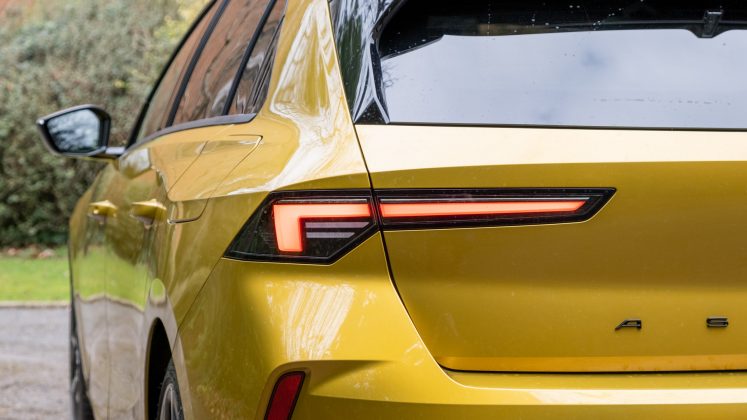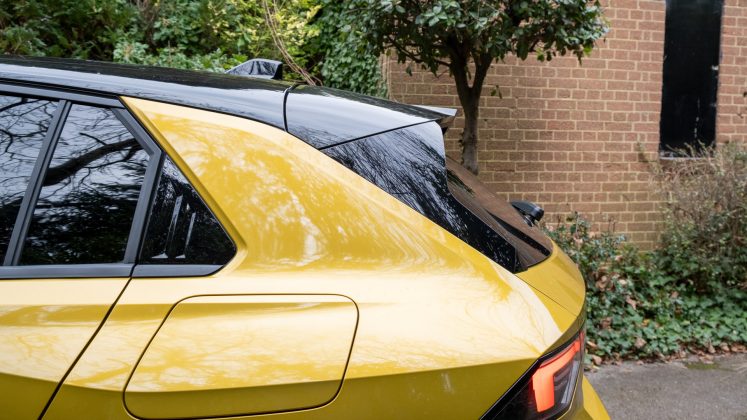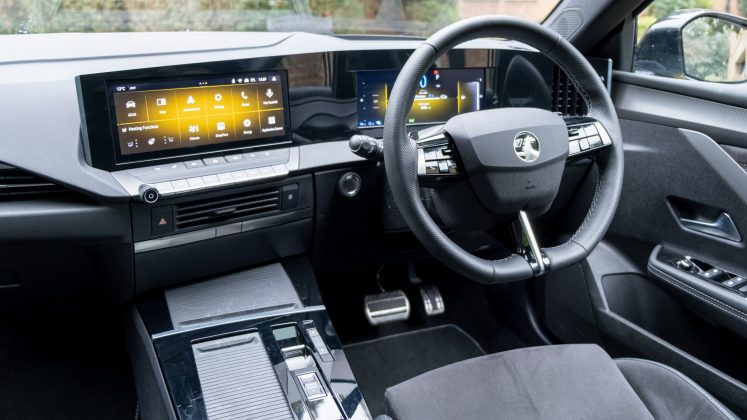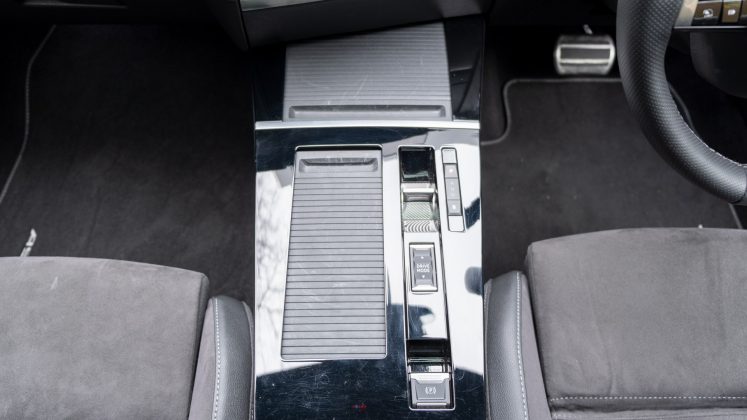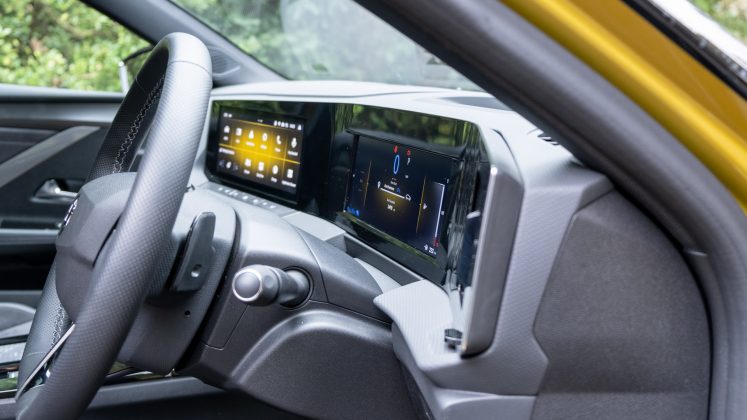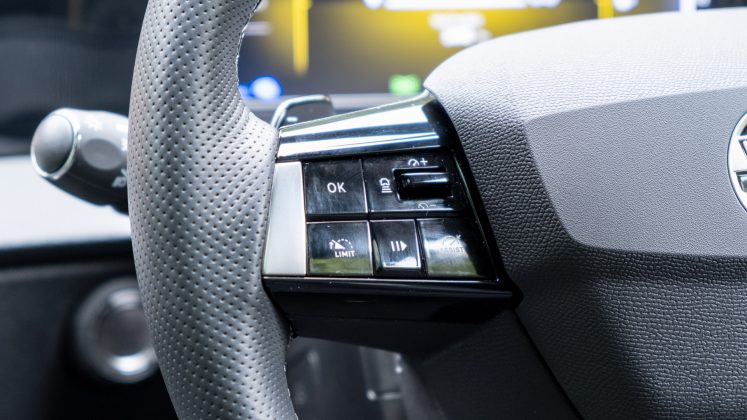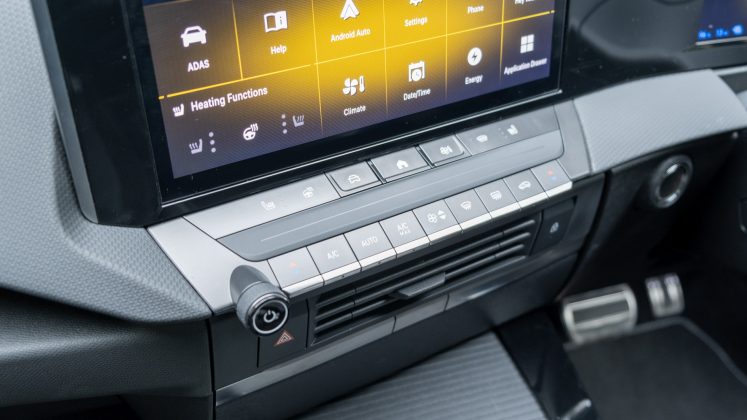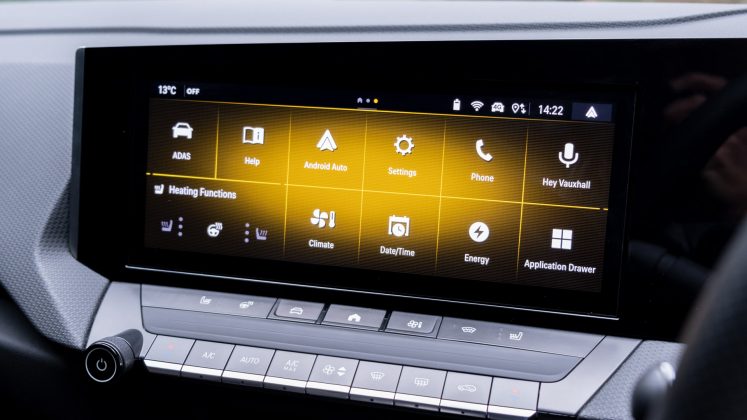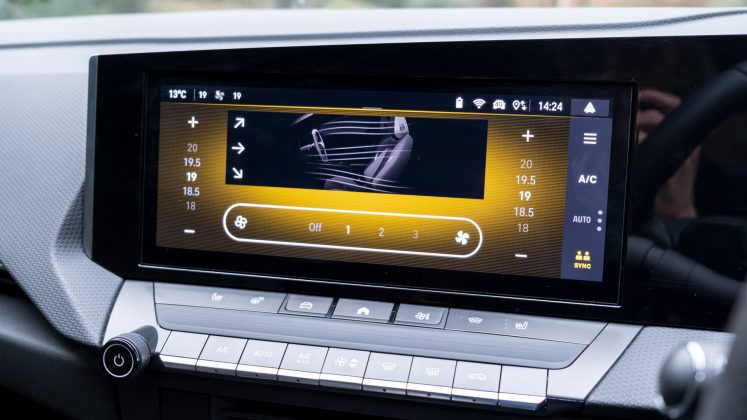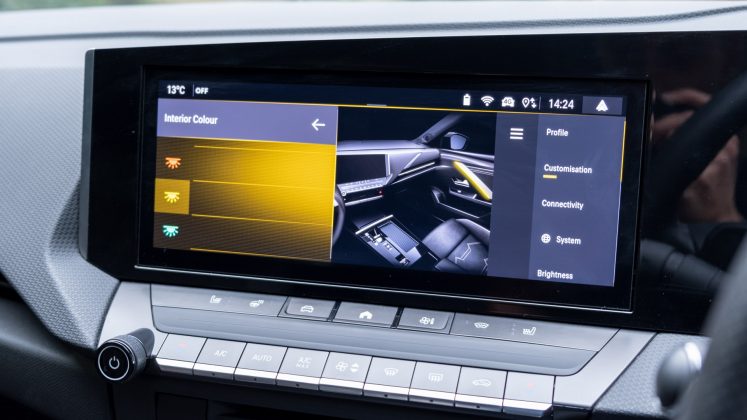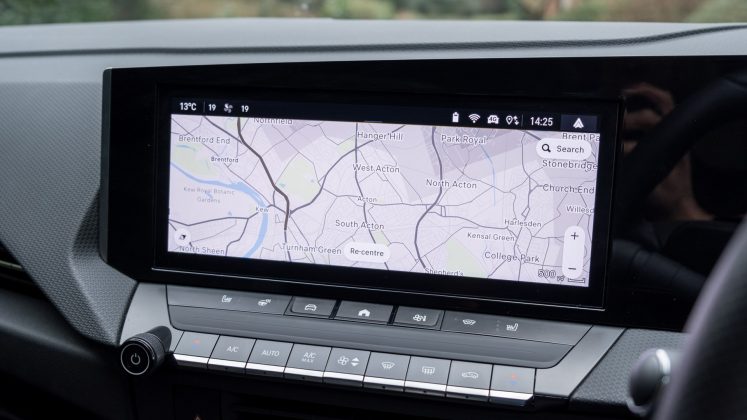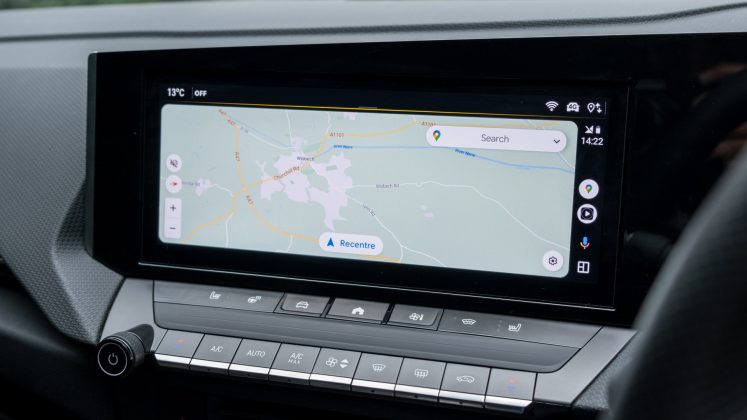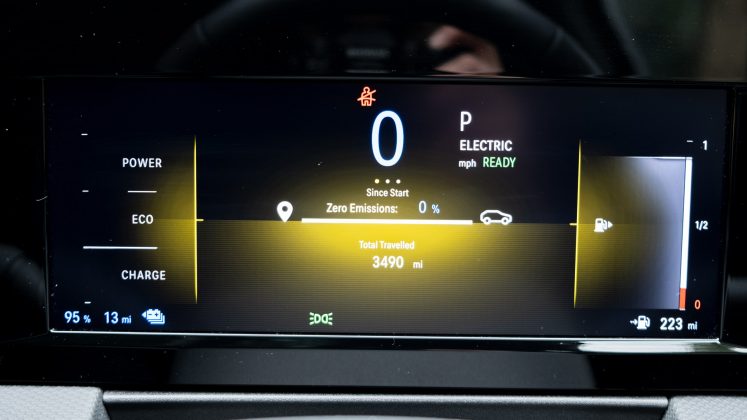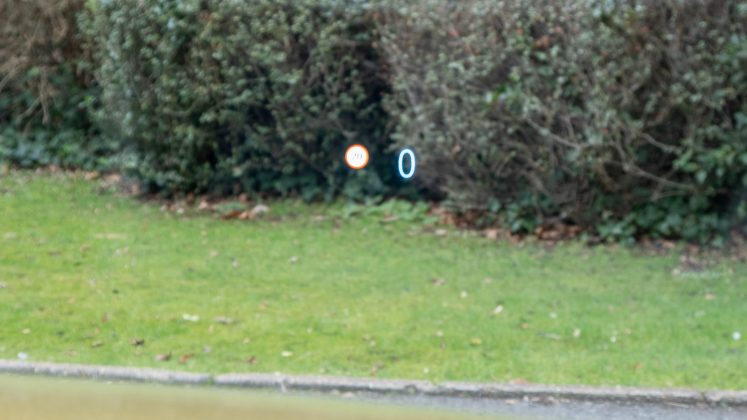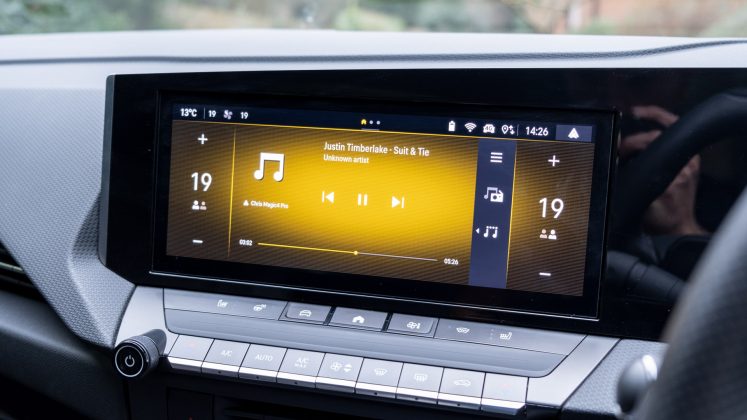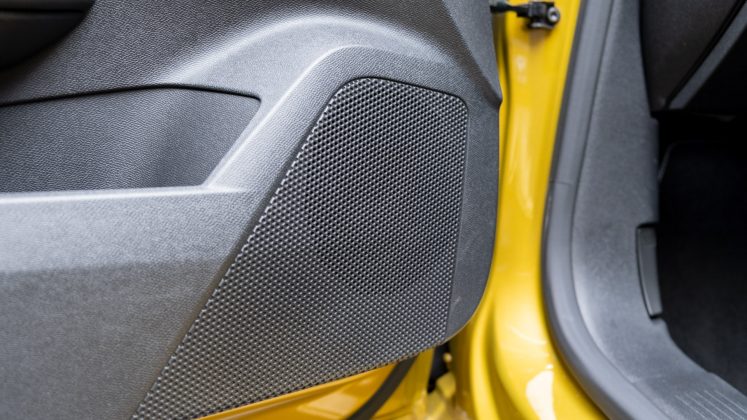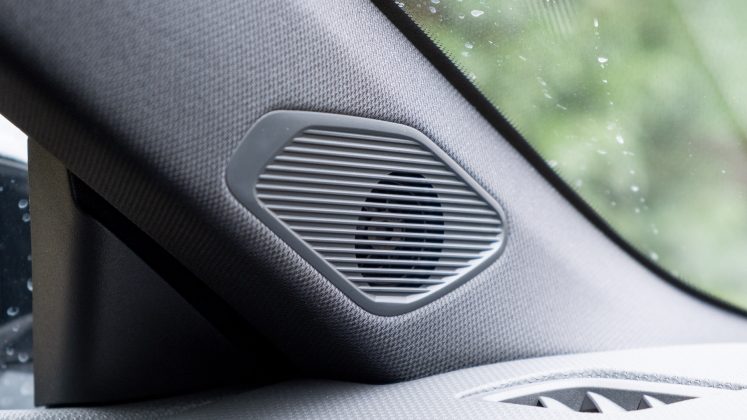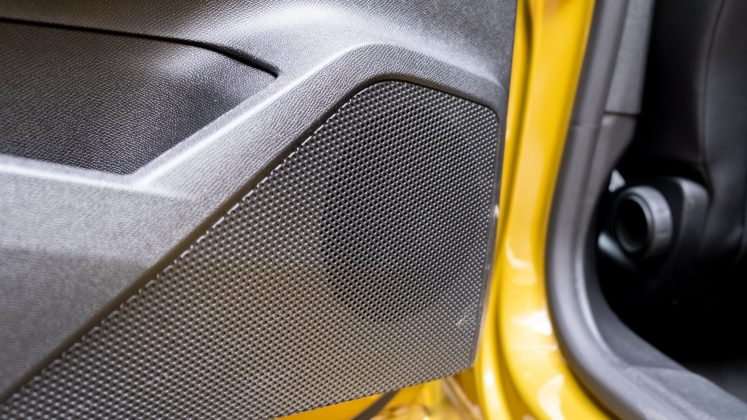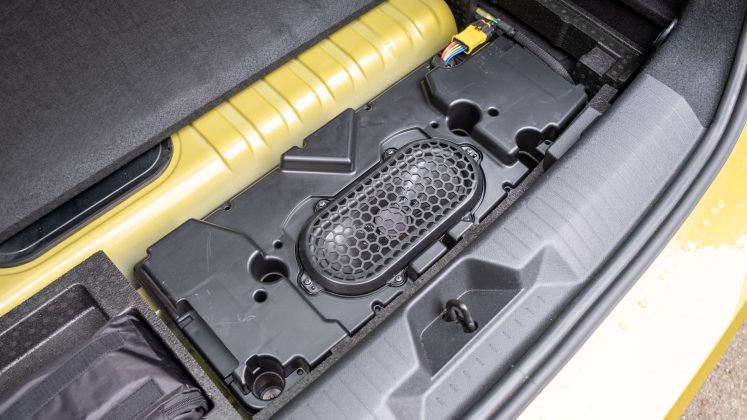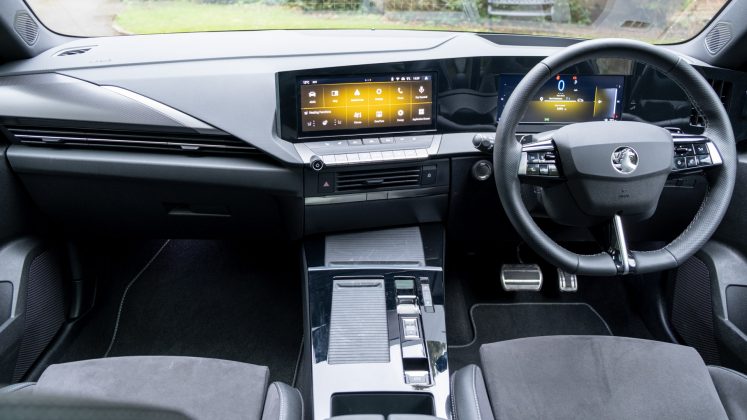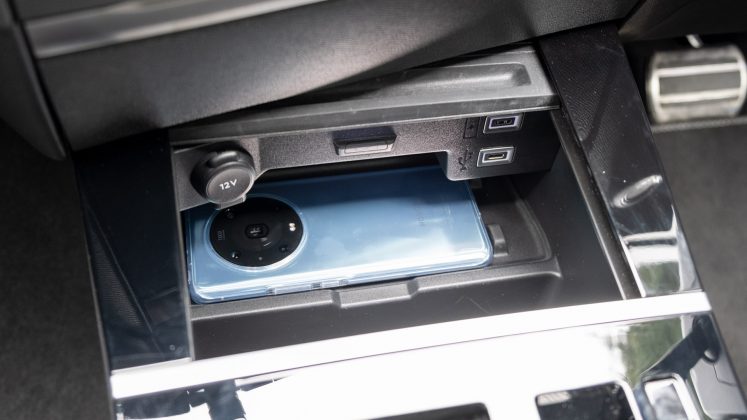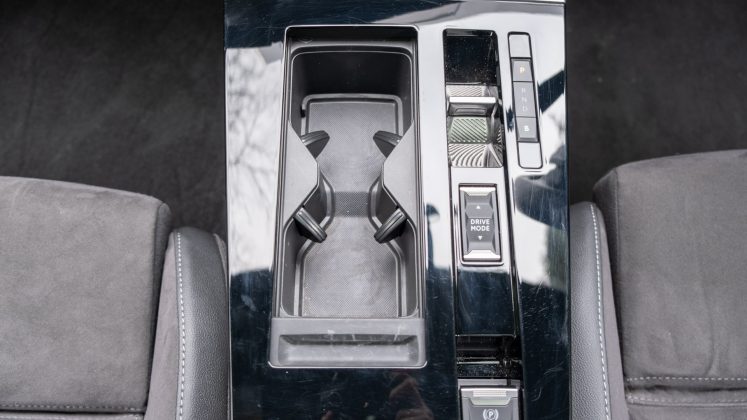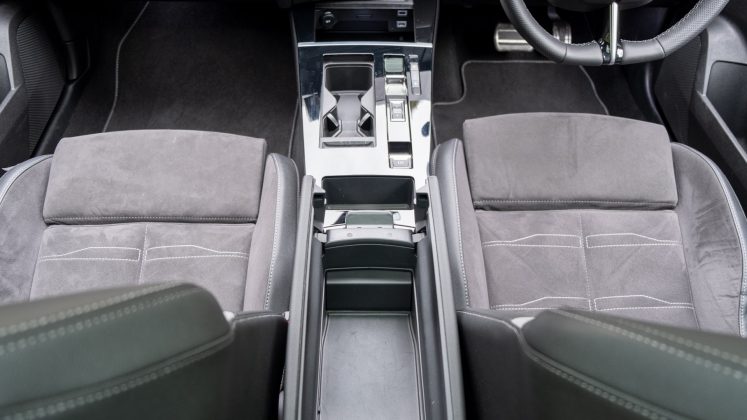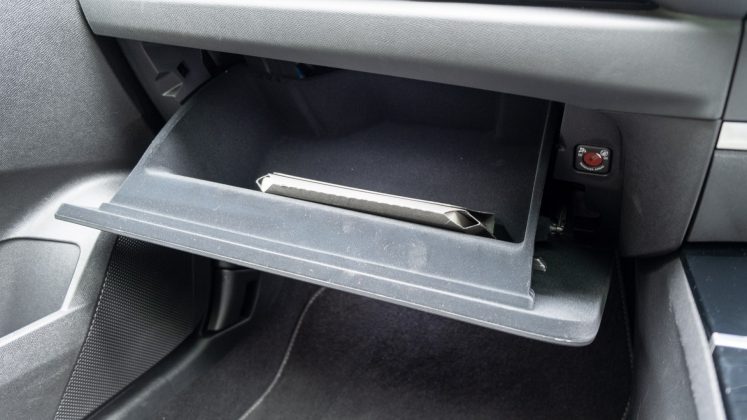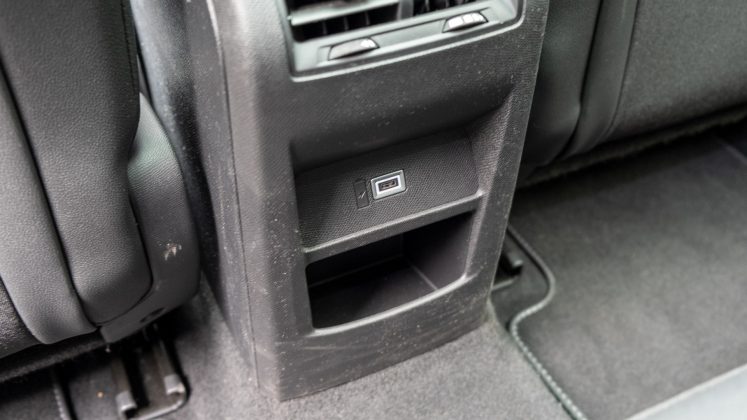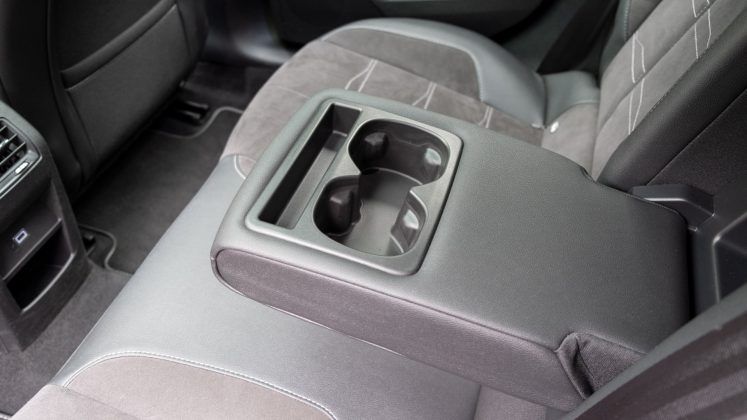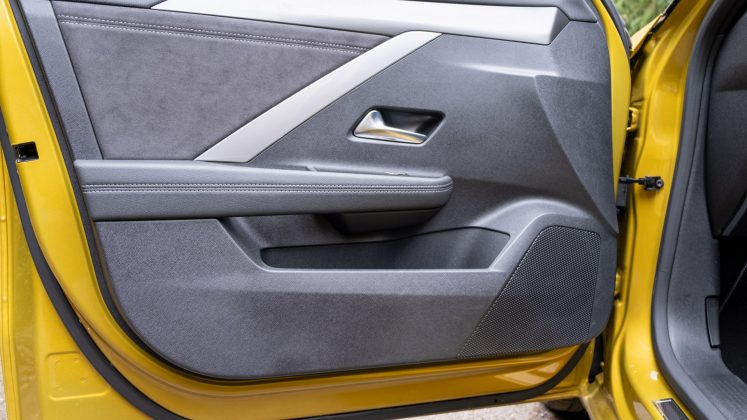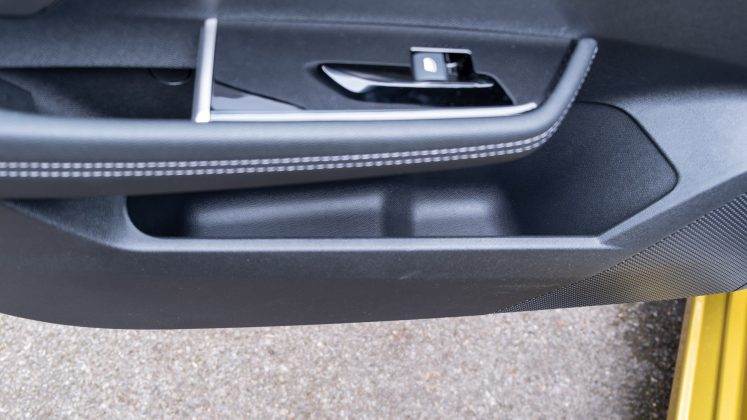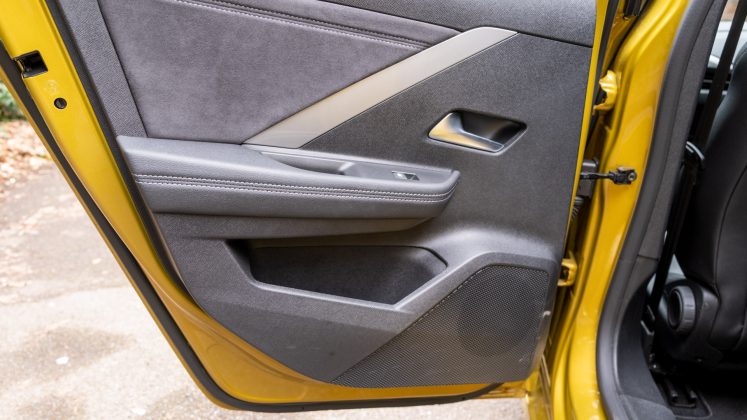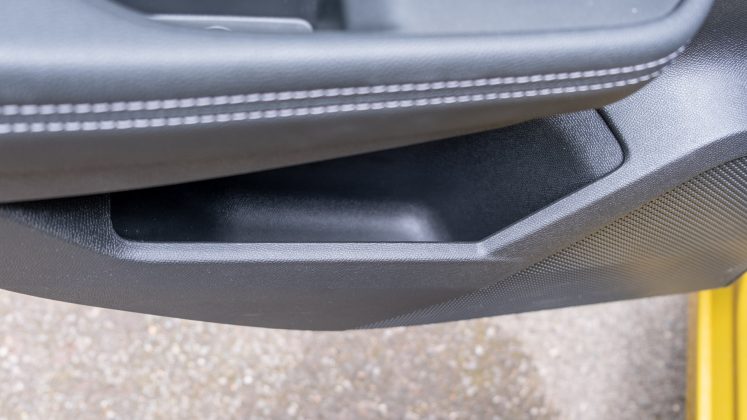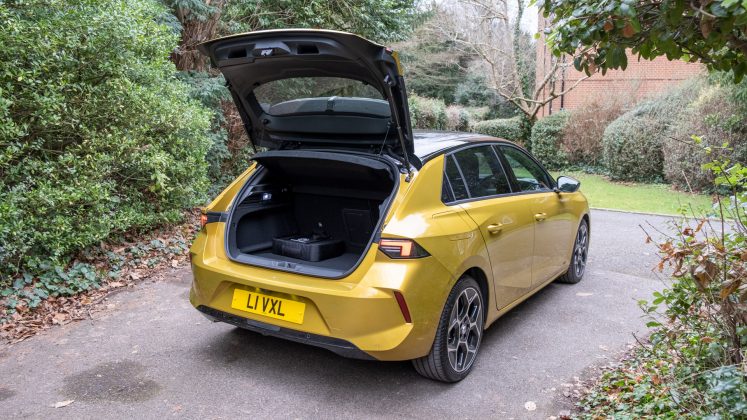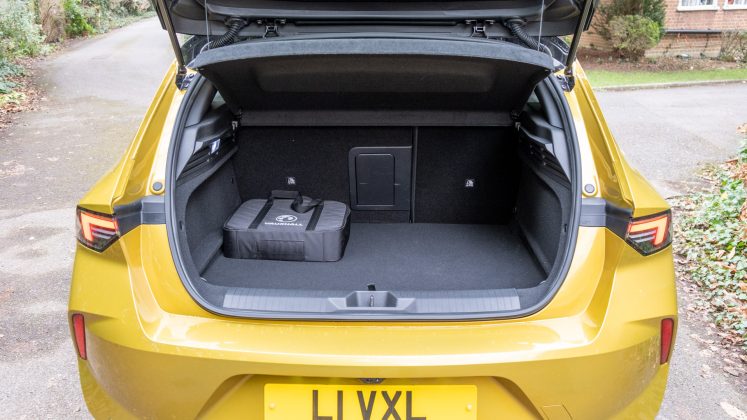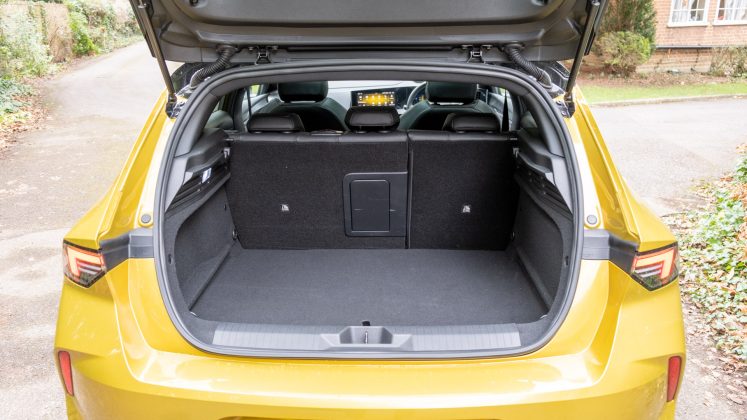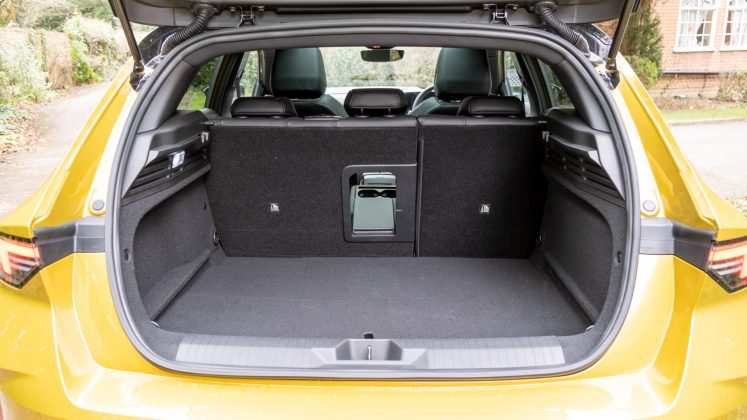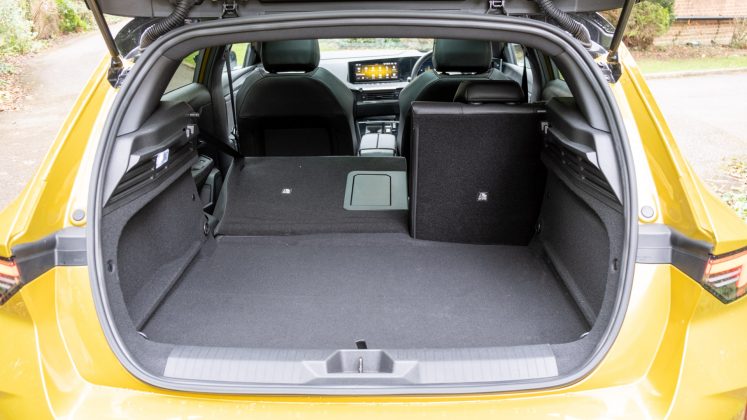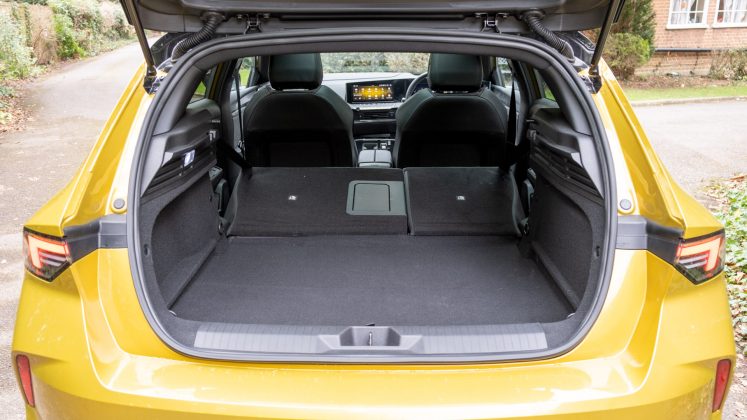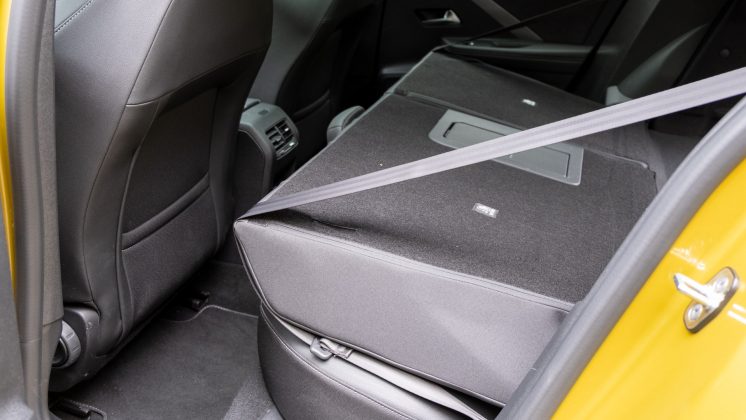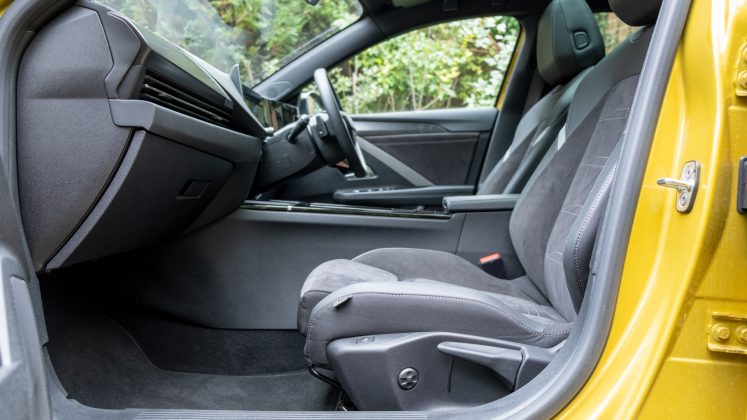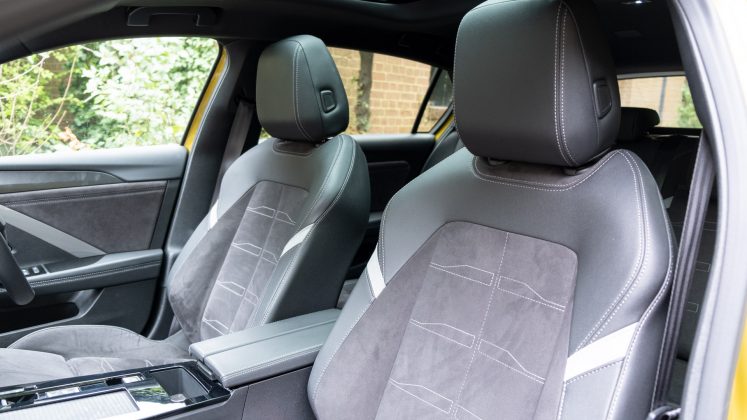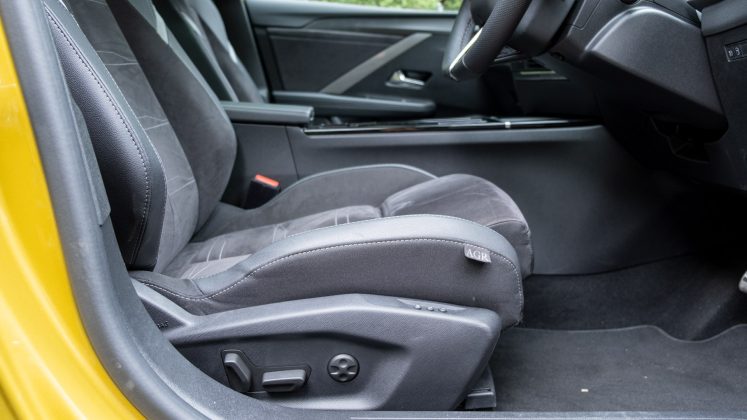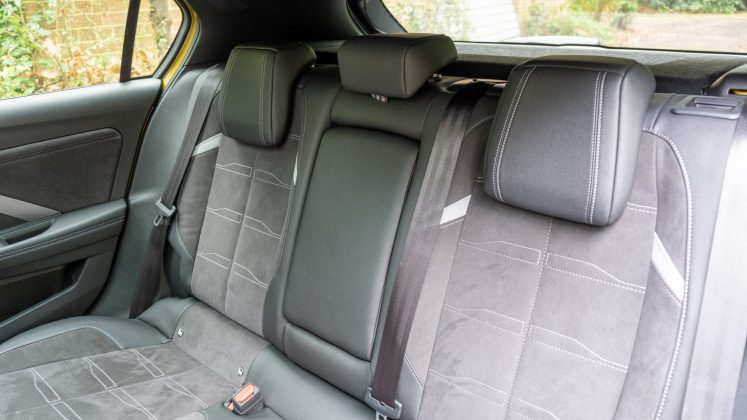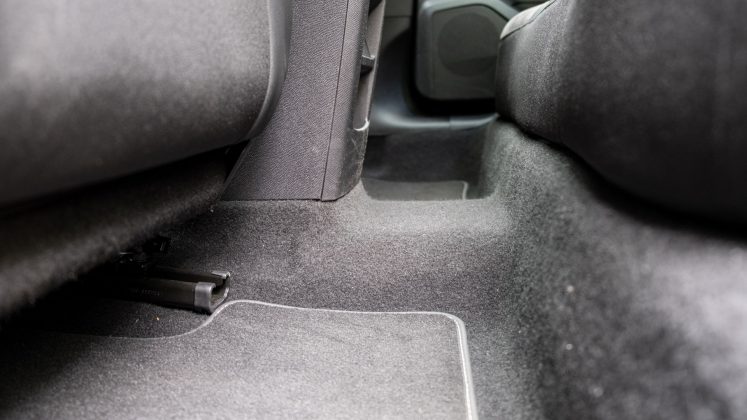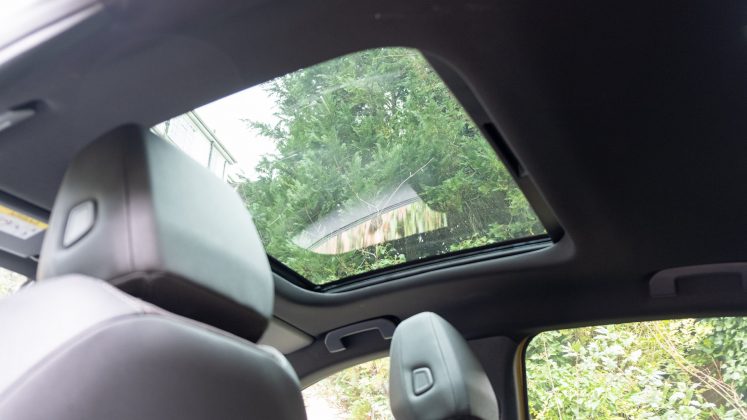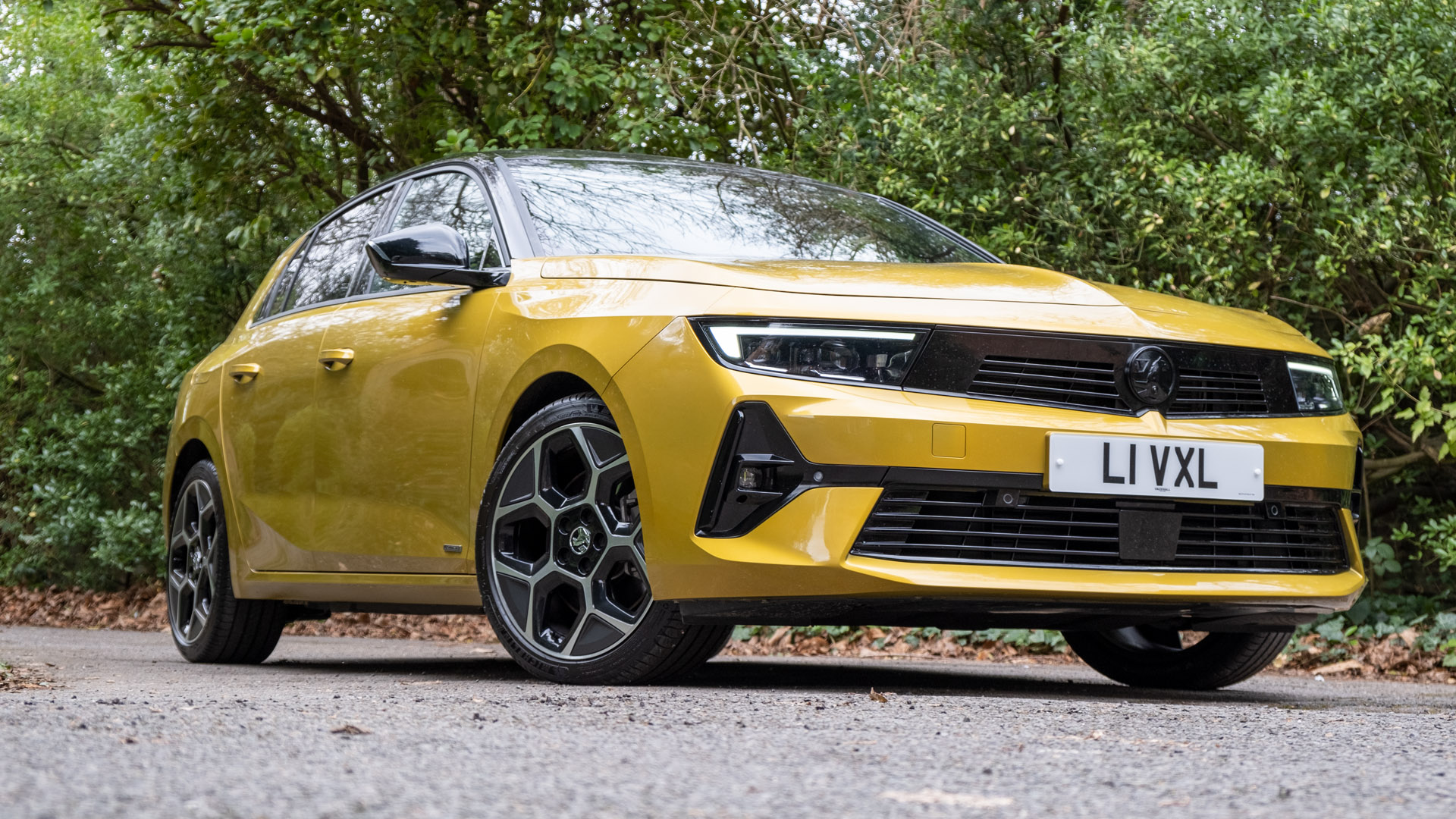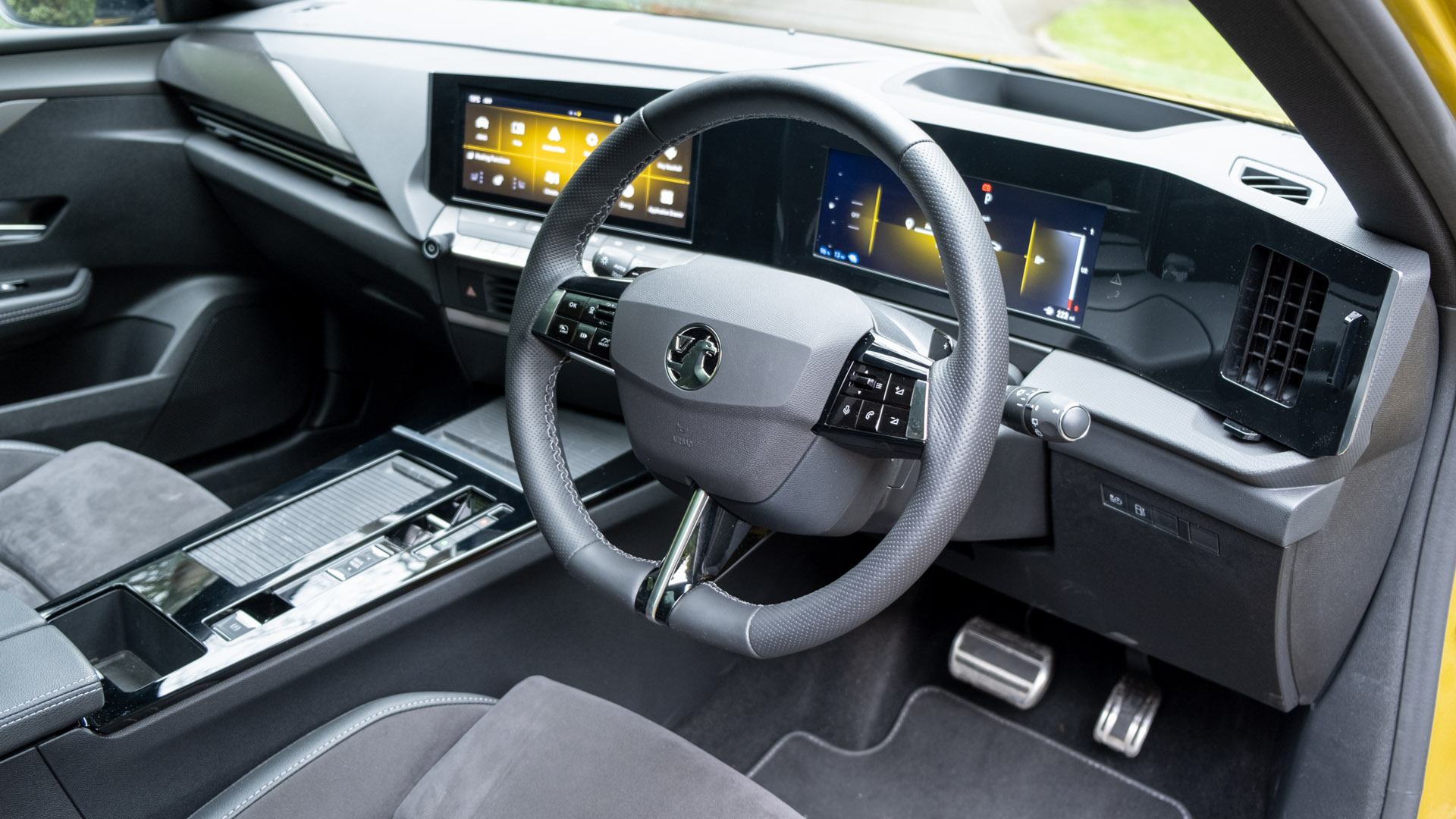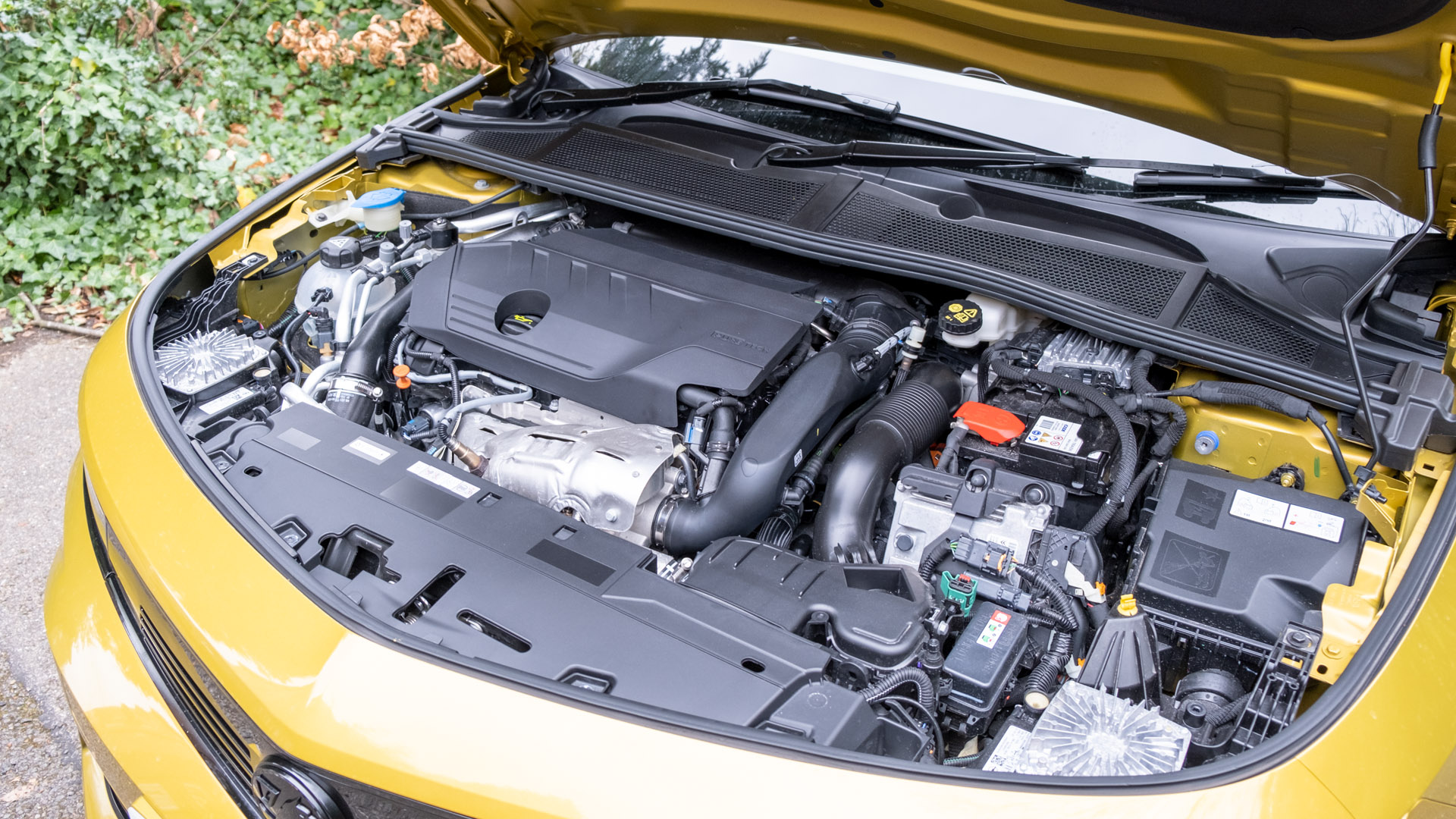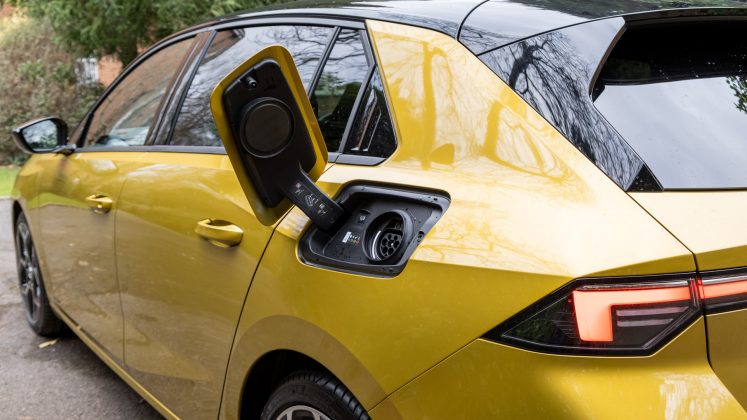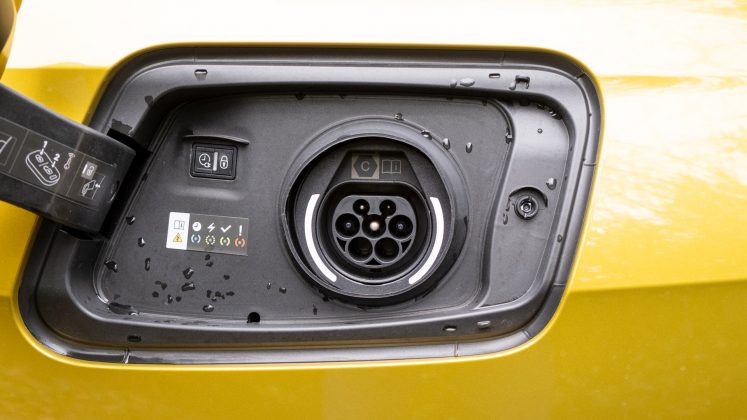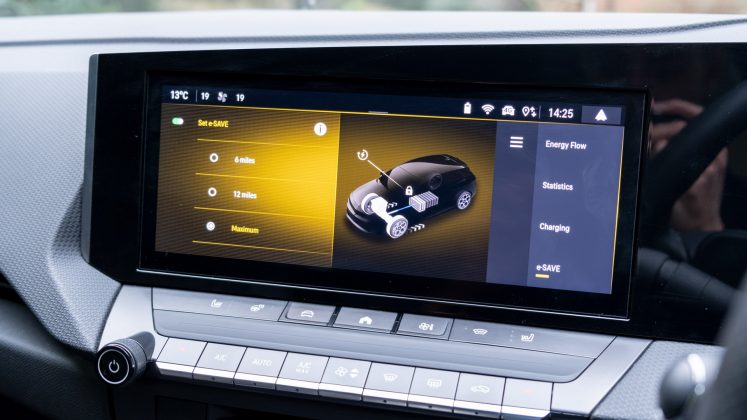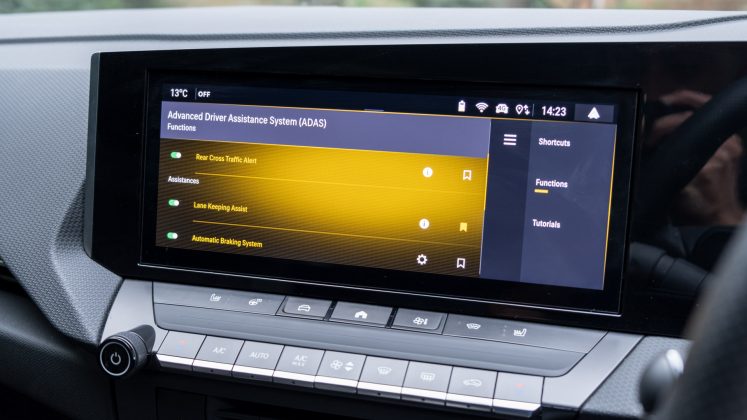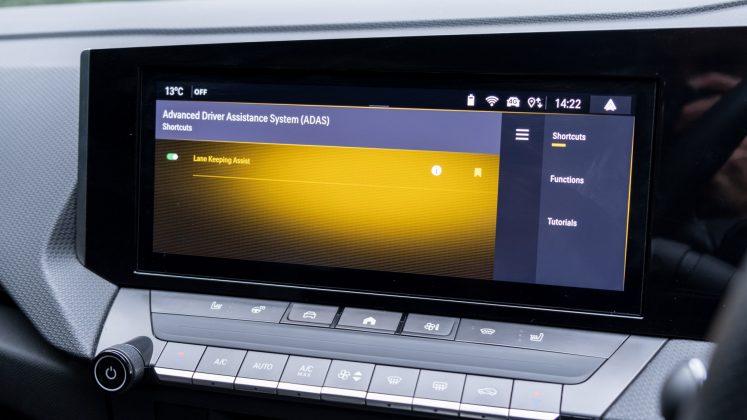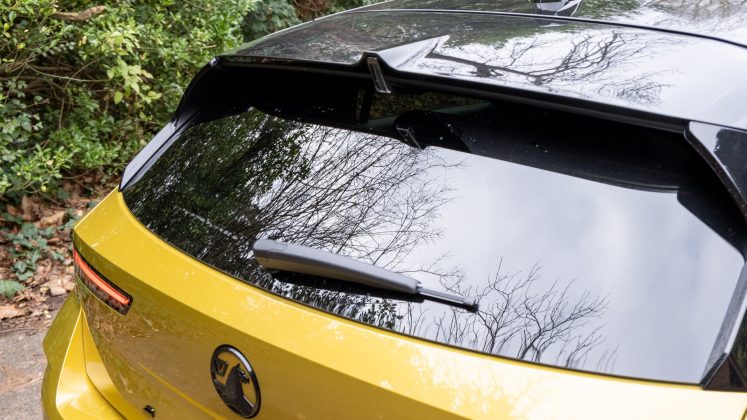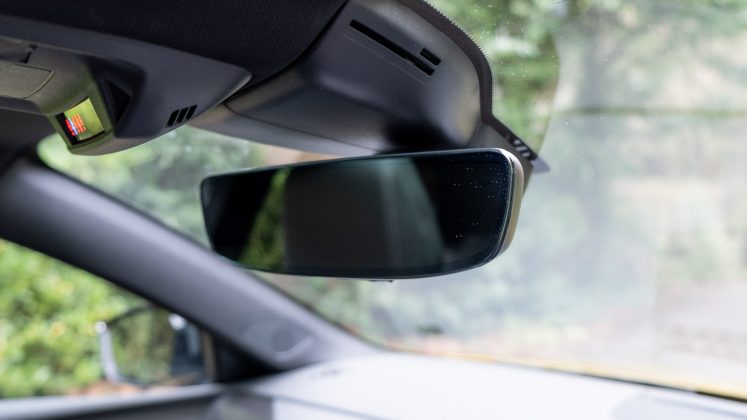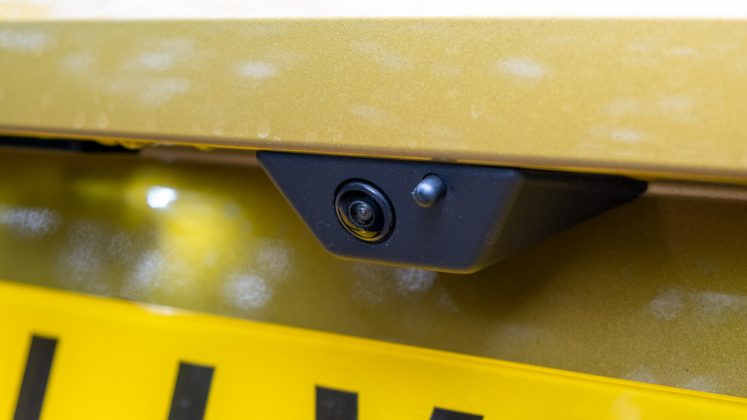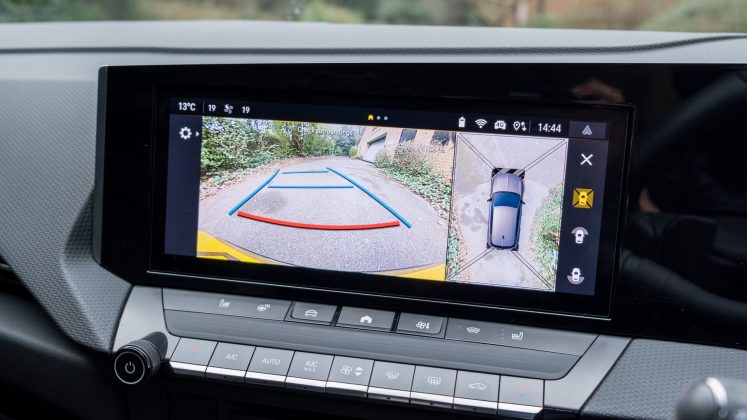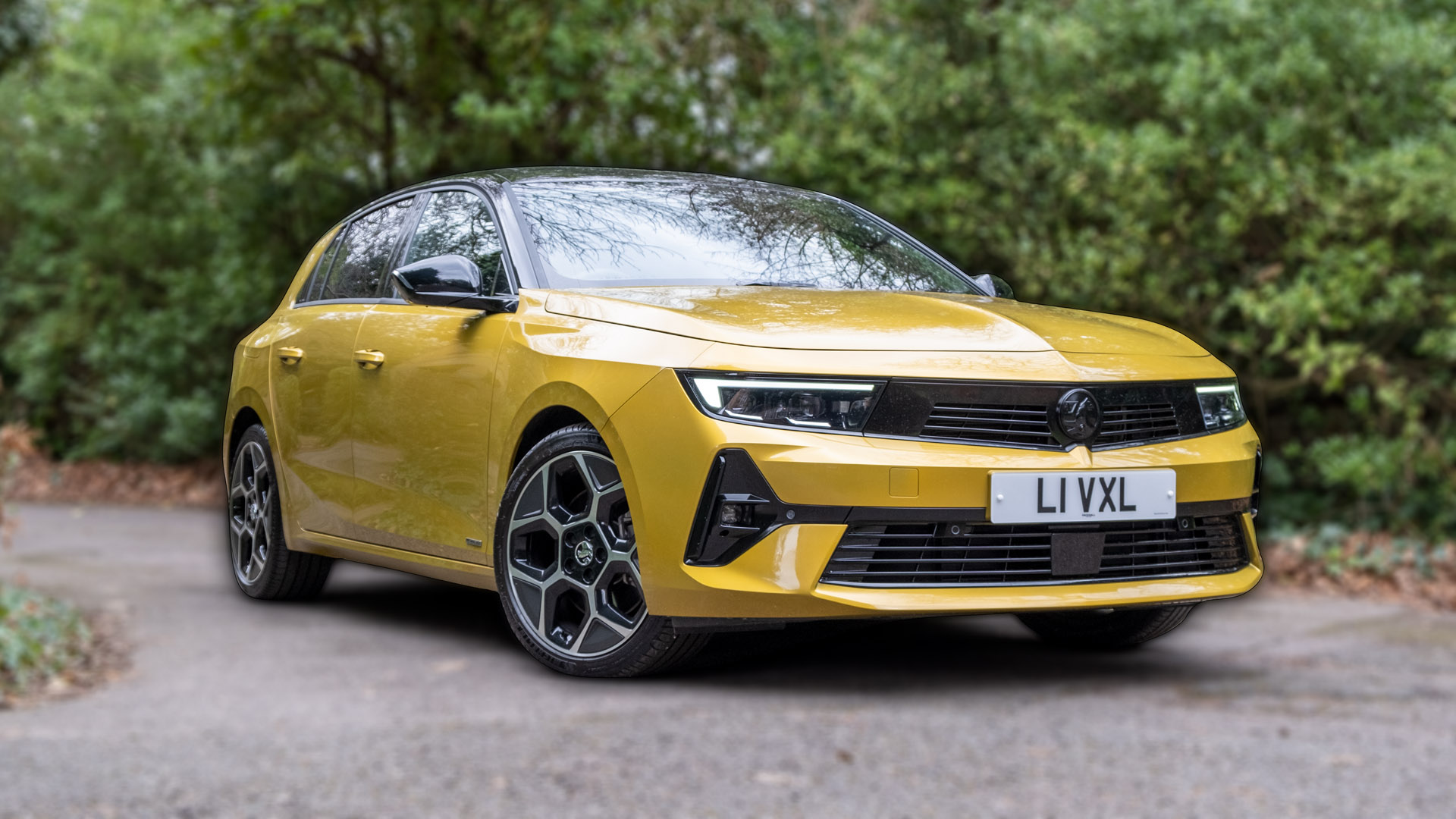The Vauxhall Astra (or Opel Astra) has been around since 1980. Now in its eight-generation, the compact hatchback is offered as a plug-in hybrid and has been redesigned with a fresh new look. However, with a growing number of PHEVs and fully-electric vehicles on the market, it’s becoming increasingly hard for manufacturers to stand out from one another. So, how does the British automaker’s vehicle compare to its electrified rivals?
If you’d prefer to watch a review of the Vauxhall Astra, head on over to our YouTube channel.
Vauxhall Astra Hybrid price & competition
Before we even start, one has to consider its steep asking price. As at the time of writing and in the UK, the hybrid model is available in three trims: GS from £37,285 (£38,485 for the GS Tourer estate variant), the Ultimate that we have on review from £40,400, and the punchier GSe at a whopping £40,550 without options. Just for context, the non-electrified model, while less equipped and less powerful, starts from £25,290. The differences between the hybrid models can be found below (click to expand):
Find the best Vauxhall Astra deals
To put Vauxhall’s list price into perspective, here are a few hybrids to consider: the Honda Jazz from £21,295, the Honda Civic from £33,720, the Seat Leon e-Hybrid from £34,305, the Audi A3 TFSIe from £35,075, the Skoda Superb from £37,735, the VW Golf MK8 GTE from £39,360 and the Mercedes A 250 e from £41,340.
Apart from part-electrified vehicles, there are a plethora of fully electric hatchbacks and saloons, such as: the BMW i4 from £57,890; the Tesla Model 3 from £42,990; the Polestar 2 from £44,950; the VW ID.3 from £39,425; the Cupra Born from £36,475; the Honda e from £36,920; the BMW i3 from £33,805; the GWM Ora Funky Cat from £31,995; the Vauxhall Corsa-e from £31,931; the Peugeot e-208 from £31,345; the Mini Electric from £31,000; the Renault Zoe from £29,995; the Fiat 500 Electric from £28,195; the Nissan Leaf from £28,995; and the MG4 EV from £26,955.
Read next: Skoda Octavia iV Estate review: An excellent hybrid estate
Vauxhall Astra Hybrid exterior review
In order to sway aspiring customers from choosing rival alternatives, Vauxhall has completely redesigned the Astra’s exterior design. Indeed, it now looks better than ever, with a pointed nose at the front, a sporty design towards the side and a snazzy rear profile. We’d go as far as saying that it’s the best-looking vehicle Vauxhall has ever made.
As for its wheels, 17” alloys come fitted as standard on the GS trim, while the pictured 18” diamond-cut alloys come in on the Ultimate and GSe models. One can add the larger wheels to the GS variant for an additional £300. For your colour options, ‘Arctic White’ comes as standard, while two or tri-coat metallic finishes are available for an additional £600-700.
Read next: Audi A7 Sportback 55 quattro TFSI e review (2022): A sporty plug-in hybrid
Vauxhall Astra Hybrid interior review
Inside, the Astra is both attractive and practical. Here, the automaker has decided to retain a familiar design and has opted for physical buttons within the cabin; given the nonsensical recent trend to remove said controls by rival automakers, it’s a welcome sight by Vauxhall.
With that said, given its asking price, the Astra’s interior design cannot compete with the likes of Audi, Mercedes-Benz or a few of its all-electric rivals. Indeed, it’s hard to associate it with some of its rivals, as it doesn’t incite that ‘premium’ look and feel; the centre console is prone to scratches due to its glossy plastic finish, and the door frames and dashboard still have hard plastic present.
Thankfully, the use of technology within the cabin can compete, and in some respects, even outclass its rivals. A vivid 10” multi-touch display resides at the centre of the dashboard, where it has an intrusively laid out menu system and is extremely easy to navigate. Better still, it supports both Android Auto and Apple CarPlay over a wired and wireless connection.
Behind the steering wheel, there’s another 10” screen that provides you with the remaining range and traversing speed. Oddly, however, it fails to feed through any turn-based navigation data; be it from the built-in system or the third-party mobile operating systems. It’s a touch baffling given the Head-Up Display (HUD), which is present on the Ultimate and GSe trims, does indeed display said information. Note, the HUD cannot be added as an option on the GS variant.
Speaking of which, in the Ultimate trim only you’ll find an eight-speaker audio system, which is a step up over the six-speaker system present on the GS and GSe trims. The former system provides an upgrade as it includes a centre speaker and a subwoofer. If you’d like to hear how the eight-speaker system performs, watch our detailed review on YouTube.
Vauxhall Astra Hybrid storage review
Keeping with technology, there’s a wireless phone charger found towards the front of the centre console; this comes fitted on the Ultimate and GSe trims only, with the GS variant featuring a non-slip area instead. Here, you’ll also find USB Type-A and Type-C ports, and a 12V socket that can be handy to power a dash cam.
Further down the centre console, you’ll find two cupholders under a retractable cover and a small storage compartment under the armrest. As for the rear of the cabin, there’s a singular USB Type-C port at the back of the centre console and two cupholders prized within the pull-down armrest. Elsewhere, the door bins at the front will accommodate a 500ml bottle alongside a few valuables, while the rear two are unsurprisingly a bit more limited. It’s worth noting that none of them are lined in fabric, which means your keys and loose change will be heard rattling around.
Buy a car phone mount on Amazon (Affiliate)
Should you want to transport larger goods, there’s the boot. Here, you’ll find 352 litres to play around with and up to 1,268 litres with the seats folded down. This is down from 422 and 1,339 litres respectively from the non-electrified model.
By comparison, the Astra Hybrid offers more storage space than smaller part-electric hatchbacks, such as the Seat Leon e-Hybrid and Audi A3 TFSI e at 280/1,110 litres, the Honda Jazz at 304/1,205 litres, but cannot compete with the likes of the Honda Civic Hybrid (409/1,187 litres), Skoda Octavia iV Estate (490/1,555 litres), and Citroen C5 X (485/1,580 litres).
Here’s how it compares to a few of its fully electric rivals: BMW i4 (470/1,290 litres); Nissan Leaf (435/1,161 litres); Tesla Model 3 (425/1,235 litres); VW ID.3/Cupra Born (385/1,267 litres); MG4 EV (363/1,177 litres); Polestar 2 (405/1,095 litres); Renault Zoe (338/1,225 litres); Vauxhall Corsa-e (267/1,076 litres); GWM Ora Funky Cat (228/858 litres); Mini Electric (211/731); Fiat 500 Electric (185/550 litres).
In terms of practicality, the boot floor is flat when the seats are dropped down, there are through-loading capabilities thanks to an integrated ski latch and the tailgate has a convenient hatchback design. However, there’s no underfloor compartment for your charging cables, meaning you’ll have to carry a separate bag within the boot and the tailgate isn’t electrified either. The rear seats in the hatchback model also have a 60:40 split-folding design, while the Tourer estate benefits from a 40:20:40 split instead.
Read next: Tesla Model 3 review: Should you buy into the hype?
Vauxhall Astra Hybrid comfort review
Aside from transporting goods, the Astra Hybrid can also transport up to five occupants including the driver. Rear headroom and legroom are a little limited with 6-foot 2-inch (188cm) individuals feeling a little constraint, especially given the inclusion of a sizeable transmission tunnel.
Thankfully, the seats are comfortable and accommodating. The front two are heated as standard across all trim levels, with the steering wheel benefiting from heating controls, too. In the Ultimate and GSe trims, the windscreen can also be heated to aid with defrosting. Should you want to take things one step further and have £2,100 to spare, you can upgrade to Nappa Leather seats, whereby the front seats also gain ventilation and massage functionalities, while at the rear the outer seats become heated. This option isn’t available in the entry-level model. Equally the panoramic sunroof solely features in the Ultimate trim.
On the notion of exclusivity, both the Ultimate and GSe trims have a soundproofed insulated windscreen. This helps suppress cabin noise while traversing at lower speeds but doesn’t aid when driving on the motorway; tyre noise creeps in and hinders the otherwise serene driving experience – you can find our in-cabin measurements by reading our dedicated audio review.
Vauxhall Astra Hybrid performance review
This leads us to driving comfort, specifically the vehicle’s suspension setup, which we feel has been tuned to perfection. The Astra Hybrid soaks up anomalies, speed bumps and potholes in and around the city, while also not suffering from body roll when driving at speed along windy country roads. Given the vehicle’s compact form factor and even its flat-bottomed steering wheel, it’s plenty of fun to drive, namely in Sport mode which permanently engages the engine, tightens up the steering wheel and sharpens the accelerator response. In the GSe model, Vauxhall has chosen to lower the suspension by 10mm with unique springs and Koni Frequency Selective Damping (FSD) dampers. This should heighten the driving experience on more challenging roads.
As for grip, the Astra has a front-mounted motor which provides power to the front axle only; it operates on a front-wheel drive (FWD) system. Thankfully, there’s no front wheel spin or torque steer when putting your foot down to the ground.
Onto performance, the Hybrid GS and Ultimate trims have a 1.6-litre four-cylinder turbocharged petrol engine, which combined with the 81 kW electric motor provides up to 133 kW (178 hp) of power and 360 Nm of torque. We had it tested from 0-60mph in 7.58 seconds using Racelogic’s Vbox Sport, which is a slither faster than the manufacturer’s 7.7-second claim. Top speed is set to 140mph. Should you want a bit more oomph, the GSe model offers up to 165 kW (221 hp) of power, 360 Nm of torque and a claimed 0-60mph time of 7.5 seconds. Top speed extends up to 146mph.
In order to help it attain its top speed, there’s an eight-speed automatic gearbox. It’s buttery smooth but can be a little slow to respond to kick-downs. Furthermore, there’s no means of selecting your desired gear, as flappy paddles and manual mode – that are present in the non-electrified models and GSe trim – are omitted altogether from the hybrid GS and Ultimate.
Find the best Vauxhall Astra deals
On the subject of a seamless transition, the Astra Hybrid flicks between pure EV and petrol mode without any hitches. It’s so smooth that the only way to tell is to look down at the instrument cluster or HUD, where you’ll see the speedometer switch between blue (EV) and white (petrol) colours.
What isn’t as impressive, however, is its electric range. In our tested model we got a measly 12 miles from its 12.4 kWh battery pack. While we appreciate most manufacturers’ WLTP range claims are a little off from real-world usage, the Astra Hybrid’s tested range is quite far off the quoted 43 miles; vehicles with a similar-sized battery pack achieve between 32-38 miles, and is what we’d have expected from the hatchback. Alas, that wasn’t the case, so we’ve reached out to Vauxhall for comment on the results and will be sure to update our review in case the model on review had any underlining issues.
Given its lacklustre electric range, we were expecting poor efficiency, but remarkably we managed to attain 53.8 MPG in our mixed driving tests. Considering this figure was attained after the battery had fully depleted, with a lot of our driving done in pure petrol mode, it’s extremely impressive. Should we have attained closer to the manufacturer’s EV claim, we might have been pushing past the 65-mile mark.
As for how the vehicle’s efficiency compares to its rivals: the Honda Civic, Honda Jazz, Seat Leon e-Hybrid, Audi A3 TFSI e and Skoda Octavia iV Estate all attained around 55 MPG. The Volkswagen Passat Estate GTE 60-65 MPG, while the Citroen C5 X sits in a league of its own at 74.2 MPG.
It’s worth pointing out that the Astra Hybrid has a 42-litre tank, which is down from the 52-litre capacity of the non-electrified model. With a full tank of petrol and a topped-up battery, you should be able to drive for 300 miles without having to stop.
Read next: Our favourite power banks for long journeys
On that note, the car has an e-Save option, which can be toggled through the infotainment system. This allows the driver to conserve the vehicle’s EV range to use at a later stage. While this can be handy for those commuting into a city, it’s a shame that this setting isn’t preserved when powering off the car.
Similarly, B-mode, which is used to recoup kinetic energy and charge the battery pack needs to be enabled each time you step foot inside the cabin. We wish Vauxhall and its rivals would integrate a means of storing said setting, as it allows consumers to be as efficient as possible while on the move and helps decelerate the vehicle when lifting off the accelerator pedal.
Should you want to charge the 12.4 kWh battery pack more efficiently, you’ll find a Type 2 port that supports up to 3.7 kW of input. This means one can go from zero to full charge in 3hrs 30mins. If, however, you’d like to bring this time down, you’ll want to opt for the 7 kW onboard charger option for £500. This will allow you to attain 100% in 1hr 55mins instead. Of course, if you don’t have access to a charge point, plugging the Astra Hybrid into a regular 3-pin 2.3 kW socket is feasible; this will take you 5hrs 30mins.
Read next: Citroen C5 X review: Hybrid perfection?
Vauxhall Astra Hybrid safety review
At the time of writing, the new Astra hasn’t been tested by Euro NCAP, so while we can’t comment about crash safety, we can talk about its driver assistance systems. As standard across all trim levels, you’ll find: lane departure warning with lane keep assist, traffic sign recognition, driver drowsiness alert, forward collision alert (all speed), automatic emergency braking with pedestrian detection and adaptive cruise control with intelligent speed adaption.
We found most did a good job, however, the latter system failed to provide a smooth experience as it would often fail to detect the leading vehicle, which would then result in overly harsh braking. Elsewhere, it’s great to see the safety systems can be saved as a shortcut, allowing you to quickly toggle them through a quick-access menu on the infotainment system – useful as for example, Lane Keeping Assist gets re-enabled automatically each time you step inside the cabin.
Should you want more assistance while on the move, you’ll want to opt for the Ultimate or GSe trims, which add: in-crash braking, lane change assist with side blind spot alert, lane positioning assist and rear cross-traffic alert. All of these are greatly appreciated and take away some stress when driving on the motorway or parking.
Speaking of which, all trims come with front and rear parking distance sensors, and the Intelli-Vision 360° panoramic cameras. Much appreciated additions as visibility at the rear is a little limited, while at the front, the positioning of the rearview mirror might obstruct your frontal vision.
Read next: MG4 EV review: The best value EV to date
TotallyEV’s verdict on the Vauxhall Astra Hybrid
On the whole, the Vauxhall Astra could be described as the complete package. It’s supremely stylish from the exterior, has a practical interior design, plenty of standardised features and is plenty of fun to drive, too.
However, in our opinion, Vauxhall has over-stepped the mark with the vehicle’s asking price, which starts from a whopping £37,285. It’s therefore hard to recommend the hybrid model over alternatives, which provide a similar, if not better experience, at a cheaper price.
Find the best Vauxhall Astra deals
Consider the Honda Civic and Jazz if you want self-charging capabilities; the Citroen C5 X, the Skoda Octavia iV, the Volkswagen Passat Estate GTE, the Audi A3 TFSI e, and the Seat Leon e-Hybrid, if you have the means of regularly plugging in at a charge point. Then, if 200-250 miles of real-world electric range will suffice, there are a few fully electric vehicles too: the MG4 EV, the Cupra Born, the VW ID.3, the Renault Zoe and the Nissan Leaf are all competitively priced and the ones we’d actively recommend.
What do you make of Vauxhall’s eight-generation Astra? Let us know in the comments section below or via social media; we’re on: YouTube, Instagram, Facebook, Twitter and LinkedIn.

